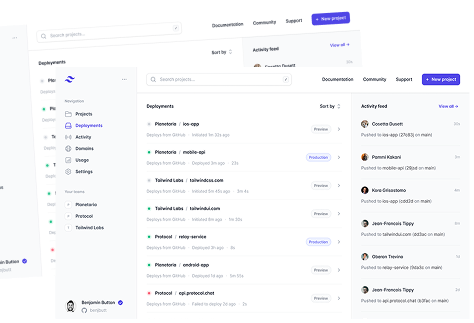Contents
- Why a Business Plan Matters
- Executive Summary: Your Business in a Nutshell
- Company Description: Who You Are
- Market Analysis: Know Your Terrain
- Organization and Management: The People Behind the Plan
- Service or Product Line: What You Offer
- Marketing and Sales: How You'll Reach Your Audience
- Funding Request: Getting the Support You Need
- Financial Projections: Show the Numbers
- Appendix: Supporting Documents
- Final Thoughts
Writing a business plan can often feel like trying to assemble a puzzle without a picture to guide you. It's not just about putting words on paper—it's about crafting a roadmap that clearly communicates your business idea, strategy, and goals. In this guide, I'll break down the process into manageable pieces, helping you create a comprehensive document that effectively communicates your vision.
Why a Business Plan Matters
Before jumping into the nuts and bolts of writing a business plan, it's worth considering why you need one in the first place. It's not just a bureaucratic necessity; a solid business plan serves multiple crucial purposes:
- Clarifies Your Vision: It helps you articulate your business idea clearly, ensuring you and your team are on the same page.
- Guides Your Strategy: It provides a structured way to outline your business goals and the strategies to achieve them.
- Attracts Investors: Potential investors rely on your business plan to understand your vision, the market opportunity, and how you plan to make money.
- Manages Growth: A business plan isn't just for startups—it's a living document that can help you manage and guide your company as it grows.
Now that we've got the "why" covered, let's dive into the "how" of writing a business plan.
Executive Summary: Your Business in a Nutshell
The executive summary is often the first section of your business plan, but it's best written last. Think of it as the elevator pitch for your business—a brief overview that highlights the key points of your plan.
What Should It Include?
- Business Name and Location: Start with the basics—who you are and where you're located.
- Business Concept: Summarize what your business does and what makes it unique.
- Market Opportunity: Briefly explain the problem your business solves and the target market.
- Financial Highlights: Provide a snapshot of your financial projections.
- Funding Requirements: If you're seeking investment, highlight how much you need and what it will be used for.
Example:
Our company, EcoTech Innovations, is based in San Francisco and focuses on creating sustainable energy solutions for urban environments. Our flagship product, the EcoGen Solar Panel, is set to revolutionize the renewable energy sector with its unique, high-efficiency design. Targeting an underserved market of urban homeowners, we project reaching a $2 million revenue within the first two years. We are seeking $500,000 in funding to scale our production capabilities and expand our marketing efforts.
Company Description: Who You Are
This section gives a deeper dive into your business. It's your chance to elaborate on the details that make your company unique and compelling.
What Should It Cover?
- Mission Statement: A clear, concise statement of your business's purpose.
- Company History: If applicable, share the background of your company, including milestones and achievements.
- Business Structure: Describe your business structure (e.g., LLC, corporation) and ownership.
- Team Overview: Highlight key team members and their roles.
Example:
EcoTech Innovations was founded in 2021 with the mission to make renewable energy accessible to urban populations. As a limited liability company, we are led by a team of seasoned professionals with over a decade of experience in the energy sector. Our co-founders, Jane Doe and John Smith, bring expertise in solar technology and sustainable urban planning, respectively.
Market Analysis: Know Your Terrain
To craft an effective market analysis, you need to understand your industry, target market, and competition. This isn't just guesswork; it requires thorough research and analysis.
What to Include:
- Industry Overview: Provide a broad view of the industry, including size, growth trends, and key players.
- Target Market: Define who your ideal customer is and what their needs are.
- Competitive Analysis: Identify your competitors and analyze their strengths and weaknesses.
- Market Trends: Discuss any relevant trends that could affect your business.
Example:
The renewable energy industry is experiencing rapid growth, with a projected annual growth rate of 8% over the next five years. Our target market—urban homeowners in the United States—accounts for a significant portion of this growth. Competitors such as SolarCity and Sunrun currently dominate the market, but their focus on suburban areas leaves a gap in urban solutions. Our EcoGen Solar Panel addresses this gap with superior efficiency and compact design, tailored for city dwellers.
Organization and Management: The People Behind the Plan
It's not just about what you do, but who does it. This section outlines your business's organizational structure and the team that will execute your plan.
Key Components:
- Organizational Structure: Use an organizational chart to show who reports to whom.
- Ownership Structure: Explain the ownership breakdown if there are multiple stakeholders.
- Management Team: Provide bios for key team members, highlighting their experience and role in the company.
- Advisors: If you have a board of advisors, mention them here.
Example:
EcoTech Innovations is structured with a flat hierarchy to encourage collaboration and innovation. Jane Doe holds 60% of the company's shares, with John Smith owning the remaining 40%. Our management team includes Jane as CEO, John as CTO, and Sarah Brown as COO. Our board of advisors, which includes industry veterans, provides strategic guidance and insights.
Service or Product Line: What You Offer
This section is your opportunity to showcase your product or service. Be clear and concise, focusing on what makes your offering unique.
Details to Include:
- Description: Explain what your product or service is and how it works.
- Features and Benefits: Highlight the key features and benefits that set your offering apart.
- Lifecycle: Discuss where your product is in its lifecycle and future plans for development.
- Intellectual Property: If applicable, mention any patents, trademarks, or copyrights.
Example:
The EcoGen Solar Panel is a high-efficiency, compact solar panel designed for urban environments. Its innovative design allows for maximum energy capture in limited spaces, offering homeowners a cost-effective, sustainable energy solution. Currently in the prototyping phase, we plan to launch the product by the end of the year. Our technology is protected by two pending patents, ensuring our competitive edge in the market.
Marketing and Sales: How You'll Reach Your Audience
A great product needs a great plan to get it into the hands of customers. This section outlines your marketing and sales strategies.
Key Elements:
- Marketing Strategy: Explain how you plan to attract and retain customers.
- Sales Strategy: Describe your sales process and how you'll close deals.
- Unique Selling Proposition (USP): Clearly state what makes your offering better than the competition.
- Pricing Strategy: Outline how you price your products or services.
Example:
Our marketing strategy focuses on digital channels such as social media and search engine marketing to reach urban homeowners. Our sales strategy involves partnerships with real estate agencies and home improvement stores. Our USP is the EcoGen's unique design, which offers superior efficiency in urban settings. We plan to price our solar panels competitively, offering financing options to make them accessible to a broader audience.
Funding Request: Getting the Support You Need
If you're seeking funding, this section is crucial. Be specific about how much you need and how you plan to use it.
What to Include:
- Amount Required: State clearly how much funding you're seeking.
- Use of Funds: Outline how you'll allocate the funds.
- Future Funding Requirements: If applicable, mention any anticipated future funding needs.
- Funding Terms: Explain what investors can expect in return (e.g., equity, debt).
Example:
We are seeking $500,000 in funding to scale our production capabilities and expand our marketing efforts. The funds will be allocated as follows: $200,000 for production equipment, $150,000 for marketing campaigns, $100,000 for operational expenses, and $50,000 for product development. We anticipate additional funding needs in two years to support our expansion into international markets.
Financial Projections: Show the Numbers
Numbers speak louder than words, especially to investors. This section provides a financial forecast for your business.
Key Components:
- Revenue Projections: Estimate your expected revenue over the next 3-5 years.
- Profit and Loss Statement: Provide a projected income statement.
- Cash Flow Statement: Show how cash will flow in and out of your business.
- Balance Sheet: Provide a snapshot of your assets, liabilities, and equity.
Example:
Our financial projections indicate a revenue growth from $500,000 in the first year to $2 million by year three. We project achieving profitability by the end of year two, with a net income of $150,000. Our cash flow statement shows steady positive cash flow, with a buffer to cover unexpected expenses. The balance sheet reflects a healthy financial position, with significant equity and minimal liabilities.
Appendix: Supporting Documents
The appendix is a place for any additional information that supports your business plan but is too detailed to include in the main sections.
What to Include:
- Resumes of Key Team Members: Highlight their experience and qualifications.
- Product Pictures: Visuals of your product or service.
- Legal Documents: Copies of contracts, licenses, or patents.
- Market Research: Detailed reports or data that support your market analysis.
Example:
Our appendix includes resumes of our executive team, detailed product schematics, and copies of our patent applications. Additionally, we provide market research data from third-party analysts that support our growth projections and market opportunity.
Final Thoughts
Creating a business plan can feel overwhelming, but breaking it down into these sections makes the process more manageable. Each part of your plan serves a purpose, from articulating your vision to outlining your financial projections. And if you're looking to make the process even easier, Spell can help you quickly draft each section and refine your wording to sound polished and professional. Whether you're just starting or looking to grow, a well-crafted business plan is your roadmap to success.











